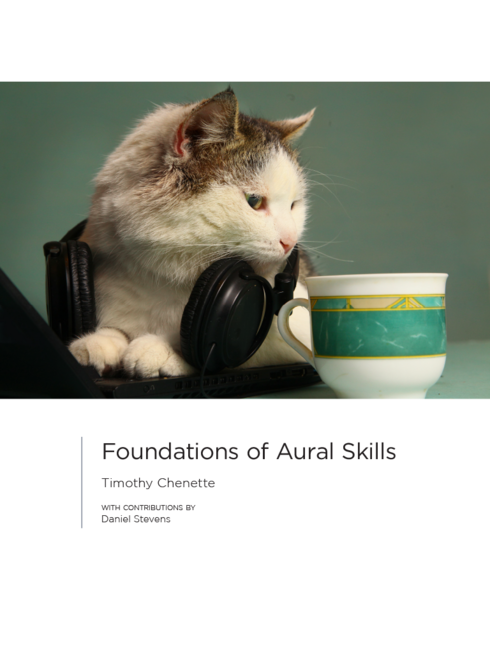
Foundations of Aural Skills
No ratings
Timothy Chenette, Utah State University
Copyright Year: 2022
Publisher: Utah Education Network Digital Press with Pressbooks
Language: English
Formats Available
Conditions of Use
![]() Attribution-ShareAlike
Attribution-ShareAlike
CC BY-SA
Table of Contents
- Chapter 1 - Attention
- Chapter 2 - Moving to Music (Meter)
- Chapter 3 - Tonic/Collection and Solfége
- Chapter 4 - Music's Materiality: Timbre, Envelope, Dynamics, Register, and Texture
- Chapter 5 - Musical Memory
- Chapter 6 - Internal Hearing and Intonation
- Chapter 7 - Rhythm Skills
- Chapter 8 - Improvisation Skills
- Chapter 9 - Playback
- Chapter 10 - Transcription
- Chapter 11 - Sight Reading Skills
- Chapter 12 - Ensemble Skills
- Chapter 13 - Dictation
- Chapter 14 - Closure, Repetition, and Contrast
- Chapter 15 - Listening for Chords
Ancillary Material
About the Book
Foundations of Aural Skills is a research-based, accessible, relevant, creative, inclusive, empowering textbook for teaching introductory aural skills. The first seven chapters provide thorough instruction in aural fundamentals, allowing students to build their foundations from a variety of starting points. The following chapters address the traditional tasks of sight-reading and dictation, but also improvisation, mimicking music you hear (“playback”), transcription, and ensemble skills. The final two chapters add some basic form- and chord-listening skills. Every section includes creative activities that learners can try out on their own or do in class. Embedded playlists for practicing listening skills include a diverse range of music that will connect with students’ preferences and allow them to experience music they haven’t worked with before. While the text is primarily designed for a first semester or year of instruction, it also includes some instruction on modulation, chromaticism, and mixed meter, and future additions/development will make these advanced applications more robust.
About the Contributors
Author
Timothy Chenette teaches aural skills and music theory at USU. His teaching consistently emphasizes creativity and the development of each student as an individual. His Ph.D and MM in music theory, with minors in voice performance, piano performance, and music history, are from Indiana University, and his BA in music is from Kenyon College; he has previously taught at the University of Massachusetts Amherst and Indiana University.
Dr. Chenette researches both music theory pedagogy and early music. In pedagogy, he has published and presented on incorporating popular music into the traditional curriculum, writing in music theory classes, and fostering creativity in the music classroom. With regard to early music, Dr. Chenette explores connections between the music and writings of early music and modern methods of analysis. His analyses focus on the complex syncopations of late fourteenth-century music and the serene harmonies of late Renaissance vocal polyphony. His research has been presented several times at the national conference for the Society of Music Theory, regional music theory societies, and the Gesualdo 400th Anniversary Conference in York, England, and in journals such as Music Theory Online and Engaging Students: Essays in Music Pedagogy.
